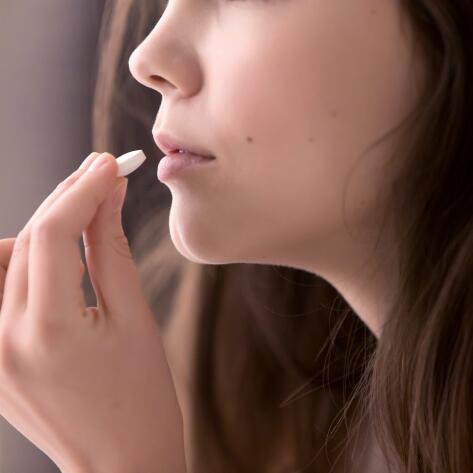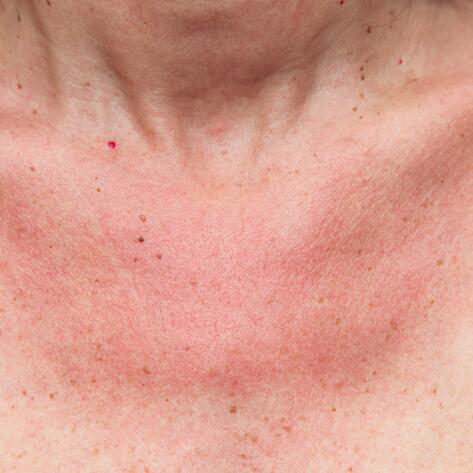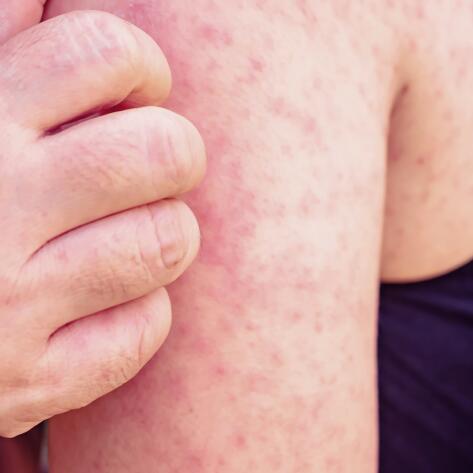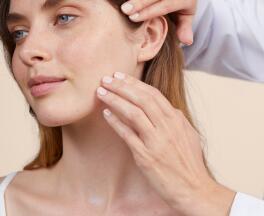Sun and medical treatment
Medicines and the sun
Some medicines and substances contain molecules that react to UV light, meaning that their structure changes when exposed to the sun to become allergenic or even toxic. These changes can lead to increased skin sensitivity in the sun, known as photosensitisation.
Which medicines are photosensitising?
There are many: anxiolytics, antibiotics, antidepressants, antidiabetics, hormone treatments, etc. If you’re having medical treatment, read the instructions carefully to see if sunlight is a contraindication while you're taking the medication. And if you’re planning a holiday, talk to your doctor beforehand to avoid risks of photosensitisation.

What is a photosensitising treatment or medication?
Medication and sunlight don't always get on with each other. Some types of treatment increase the skin's sensitivity to the sun, so extra care should be taken before sun exposure.
Some molecules in your medicines can become allergenic or even toxic when exposed to the sun. These changes can lead to increased sensitivity of the skin to the sun, known as photosensitisation.
FRIENDLY, EXPERT ADVICE
Taking your treatment at the right time
If possible, take your medicine in the evening, around 5 or 6pm, rather than in the morning.
The benefits and damage that the sun does to the skin
How does photosensitisation occur?
Phototoxic reaction
A phototoxic reaction is the most common type of reaction, not to be confused with sun allergy. This type of reaction occurs when a large amount of the photosensitising product is used. It manifests itself in the minutes or hours following exposure to the sun and results in the appearance of red marks on sun-exposed areas of the face, neck and décolleté, as well as the arms, legs and feet. After the initial phototoxic reaction, further exposure may trigger a delayed reaction or photoallergy.
Photoallergic reaction
This is the rarest type of reaction and is caused by the use of a small amount of photosensitising product already known to the skin. It shows up within 24 hours or more of exposure to the sun and results in the appearance of intense itching on the sun-exposed areas, similar to hives or eczema, which can then spread to the rest of the body. Pigmentation abnormalities may also occur, with a brown or bluish colour.
No reaction after a year of treatment doesn't mean you're without risk. It can take several outings in the sun before you have a photosensitive allergic reaction. And watch out: you can have the same reaction after sunbed sessions, as well!
What to do if you have a photosensitisation reaction
In the event of a reaction to a photosensitising treatment, all exposure to the sun should be stopped immediately. Depending on the severity, your pharmacist or doctor will suggest a cream or gel to soothe the itching and treat any blisters.
Avoid the sun
As a preventive measure, it’s wise to keep your hours of sun exposure to a minimum or simply not go out in the sun at all.
Choose the right protection
Pay attention to what your skin is telling you: although sunburn usually appears twelve hours after exposure, patients often describe a burning sensation at the moment of exposure. In all cases, UV exposure should be avoided and maximum UVA/UVB protection used.
Protect yourself all year round
Whether it's summer or winter, come rain or shine, the sun's rays have an effect on the skin, so it’s important to give your skin the daily protection it needs to keep it safe all year round. Even in the city, apply a moisturizing cream with a light SPF to filter out UV rays, so that you can enjoy lunch al fresco with complete peace of mind!


Antibiotics, like other drugs, are incompatible with the sun and can cause reactions such as pimples, itching and even pigmentation problems. If you are undergoing medical treatment, it’s essential that you read the instructions before going out in the sun to limit the risks associated with sun exposure.
And medicines are not the only photosensitising substances: some perfumes and other alcohol-based cosmetics are also photosensitising, as are certain plants and fruits (grass, parsley, citrus fruits, figs, etc.). The most typical case is when a person makes lemon juice, touches their arm and then shows marks after being in the sun. As a rule of thumb, always wash your hands well after eating or cooking.
WE ANSWER YOUR QUESTIONS
No: just a walk in good weather can result in a phototoxic reaction. By far the most common type of photosensitisation, this type of reaction presents as a sunburn that is disproportionate to the level of sun exposure.
No reaction after a year of treatment doesn't mean you're without risk. It can take several outings in the sun before you have a photosensitive allergic reaction.
Medicines aren’t the only photosensitising substances: some perfumes and other alcohol-based cosmetics, as well as certain plants and fruits (grass, parsley, citrus fruits, figs, etc.) are also photosensitising. The most typical case is when a person makes lemon juice, touches their arm and then shows marks after being in the sun. As a rule of thumb, always wash your hands well after eating or cooking.
OUR SOLUTIONS TO PROTECT OUR FUTURE
Eau Thermale Avène skin care products designed to protect the skin and respect the oceans
- Very high sun protection - Mineral cream SPF50+
Sun Care - Intolerant Skin
Very high sun protection - Mineral cream SPF50+Protects - Very high sun protection - Mineral lotion SPF50+
Sun Care - Intolerant Skin
Very high sun protection - Mineral lotion SPF50+Protects - Hydrates
NEWSLETTER
We're always here for your skin!
All our advice on how to take care of your skin day to day.

Which skin care routine should you adopt?
Identify what it really needs with the help of our experts and discover the most suitable skin care routine for you.


